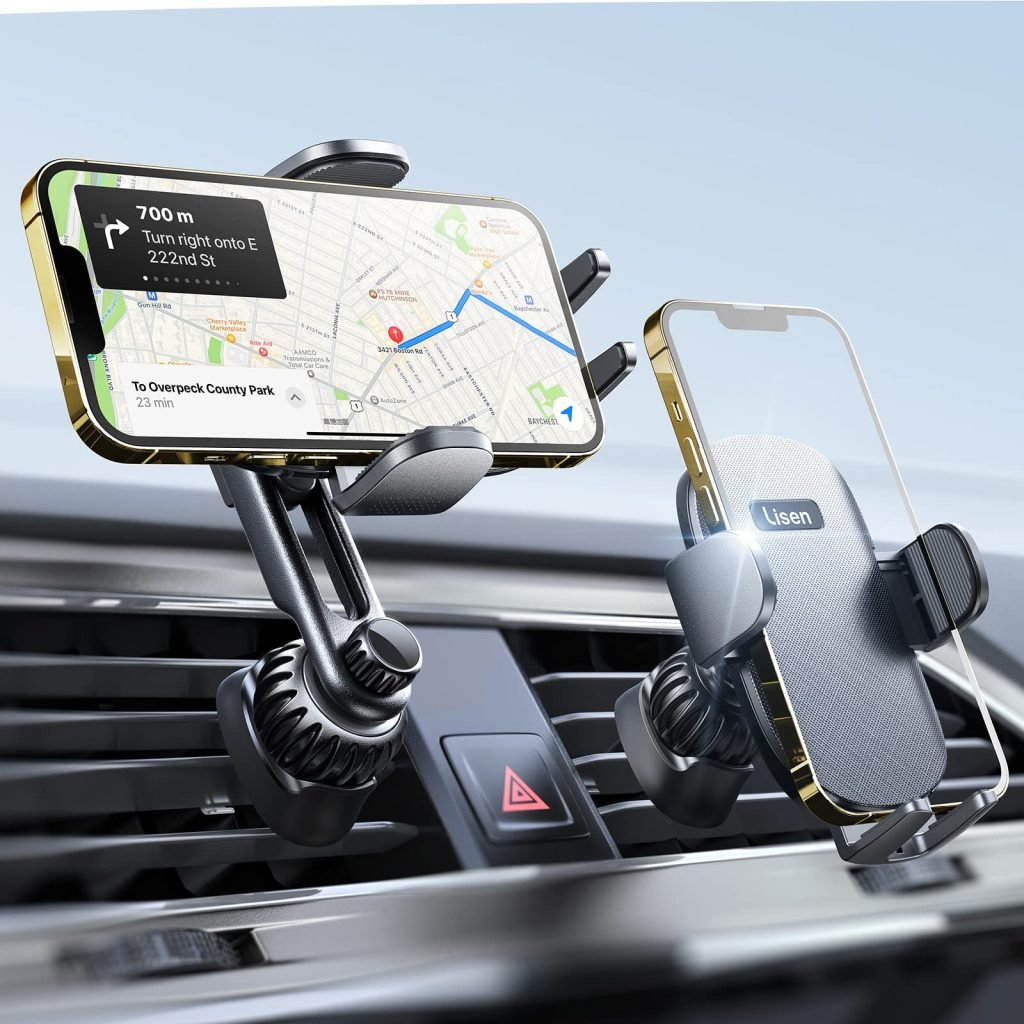
Whether it be for a road trip or day-to-day commuting, having the right items in your car can save you time, stress, and money. In this article, we’ll be taking a look at the essential things every car should have – from items to keep you safe and comfortable, to preventative maintenance items that will keep you on the road for years to come.
Table of Contents
Essential Things Every Car Should Have
Whether you’re a new car owner or a seasoned driver, there are certain things every car should have to ensure a safe, comfortable, and convenient driving experience. Beyond the standard features provided by the manufacturer, there are additional accessories and equipment that can enhance your car’s functionality. In this article, we will explore the essential things that every car should have, from safety equipment to convenience accessories.
1. Documentation
Valid car and driver documents are essential things every car should have. I strongly suggest investing in a folder of superior quality to house all of the important paperwork pertaining to your automobile. You can put it away in the trunk or the glove box, where it will be safe. If you have these documents, you may be assured that you will have all you require in the event that your vehicle breaks down, there is an emergency, or you run into the police.
- PUC certificate:
Valid pollution under control certificate is a must. A Pollution Under Control (PUC) certificate is a document issued by an authorized testing centre that certifies that a vehicle has been tested for emissions and meets the air pollution standards set by the government. It is mandatory for all vehicles in India to have a valid PUC certificate, and it must be presented at the time of vehicle registration, renewal of registration, and during traffic stops. The certificate is usually valid for a period of one year and must be renewed annually. The PUC certificate is an important document as it helps in controlling the air pollution caused by vehicles.
- Insurance documents:
You should always keep your car insurance papers handy. In case of an accident, these will come in handy in settling any claims. Insurance documents are documents provided by an insurance company that provides proof of insurance coverage for an individual or organization. The most common types of insurance documents include:
Insurance Policy: This document outlines the terms and conditions of the insurance coverage, including the type of coverage, the limits of liability, and the exclusions.
Insurance Certificate: This document serves as proof of insurance coverage and contains information such as the policyholder’s name, the type of coverage, and the policy number.
Declaration Page: This document provides a summary of the insurance policy, including the policyholder’s name, coverage limits, and the effective and expiration dates of the policy.
Endorsement: This document modifies the original policy and includes changes such as additional coverage or changes in coverage limits.
Insurance ID card: This document serves as proof of insurance coverage and typically includes the policyholder’s name, the policy number, and contact information for the insurance company.
It is important to keep these documents updated and accessible, as they may be required in the event of a claim or during a traffic stop.
- Owner’s Manual:
An owner’s manual, also known as an instruction manual, is a document provided by the manufacturer of a product that contains information on how to use, maintain, and troubleshoot the product. The manual typically includes information on the product’s features, operating instructions, safety warnings, and warranty information. Owner’s manual is commonly provided for products such as cars, appliances, electronics, and tools.
It is important to read and understand the owner’s manual before using a product, as it can provide valuable information on how to safely and correctly operate the product, and how to troubleshoot and maintain it over time.
- Driving License:
A valid driving license is necessary for driving a car on public roads. Make sure you have this document before hitting the road! A driving license is an official document issued by a government agency, such as the Department of Motor Vehicles (DMV) in the United States that certifies that an individual has met the necessary qualifications and passed the required tests to operate a motor vehicle on public roads.
2. Car Repairs
Most car repairs are simple and can be easily fixed with a few tools and supplies. However, some repairs may require more extensive work. Below is a list of essential items every car should have to make sure you’re prepared for anything:
- Spare Tire:
In the event of a flat tire, it’s always good to have a spare ready to go. Be sure to check the air pressure in your spare periodically to ensure it’s properly inflated. A spare tire, also known as a “full-size spare,” “emergency spare,” or “reserve tire,” is an additional tire that is kept in a vehicle as a replacement in case the primary tire becomes damaged or punctured. Spare tires are usually smaller, less durable and have a lower speed rating than regular tires, and are designed for temporary use only.
Typically, spare tires are stored in the trunk or under the vehicle and are usually mounted on a steel or aluminium rim that is different from the rims on the vehicle’s regular tires. The spare tire may be a “doughnut” spare, which is a smaller, lightweight tire meant for short-distance use, or a full-size spare, which is the same size as the regular tires on the vehicle.
It is important to check the spare tire’s air pressure and condition periodically and replace it with a new one if it is worn or damaged. It’s also important to familiarize yourself with the vehicle’s tire-changing procedures, as it can be a bit different from one car to another.
- Tire Jack:
A tire jack is a mechanical device used to lift a vehicle off the ground in order to change a flat tire. It is a necessary tool to have in the car, especially if you don’t have a run-flat tire or don’t subscribe to a roadside assistance service.
There are several types of jacks, including:
Scissor jack: This type of jack uses a scissor-like mechanism to lift the vehicle. It is compact and easy to use, making it a popular choice for cars and small trucks.
Bottle jack: This type of jack uses a hydraulic cylinder to lift the vehicle. It is more powerful than a scissor jack and can lift heavier vehicles.
Floor jack: This type of jack is typically used in garages and service stations. It is larger than a scissor or bottle jack and can lift a vehicle higher off the ground.
When using a jack, it is important to follow the manufacturer’s instructions and use the jack on a level surface. Always use the jack points of your vehicle, which are reinforced areas designed to support the weight of the vehicle. Never use a jack on an unstable surface, or lift a vehicle higher than necessary to change the tire.
Jumper Cables
In case your battery dies, jumper cables will help you start the car. Be sure to ask someone for help if you’ve never used them before.
Jumper cables, also known as “boost cables,” are electrical cables used to transfer electrical current from one vehicle’s battery to another in order to start a car with a dead battery. They are typically made of copper and have clamps on either end that are used to connect to the batteries of the two vehicles.
Tire Pressure Gauge
Keep an eye on your tire pressure to avoid flat tires. You can pick up a gauge at most auto stores. A tire pressure gauge is a tool used to measure the air pressure inside a tire. It is an essential tool for maintaining the proper tire pressure, which is crucial for vehicle safety, fuel efficiency, and longevity of the tires.
It’s important to check the tire pressure regularly, at least once a month, and before any long trip, and to inflate or deflate the tires as needed to maintain the recommended pressure.
3. Cleaning accessories
I. Car vacuum cleaner:

A car vacuum cleaner is a portable device used to clean the interior of a vehicle, including the seats, carpets, and floor mats. It is similar to a household vacuum cleaner, but it is designed specifically for use in a car and is often smaller and more portable.
When using a car vacuum cleaner, it is important to follow the manufacturer’s instructions and to use the appropriate attachments for the task at hand. It’s also important to empty the dustbin or filter frequently to maintain the suction power and to keep the vacuum cleaner running efficiently.
II. Cleaning gel:
A cleaning gel can be used to clean your car’s interior surfaces, such as the dashboard and door panels. Cleaning gel, also known as cleaning putty or cleaning mud, is a type of cleaning product that is used to remove dust, dirt, and grime from hard-to-reach areas in a vehicle, such as air vents, cup holders, and crevices. It is typically made of a non-toxic, biodegradable material that is safe for use in a car.
III. Windshield cleaning tool:

A windshield cleaning tool can help you keep your windshield clean and streak-free. A windshield cleaning tool is a device used to clean the windshield of a vehicle. It typically includes a handle, a cleaning solution reservoir, and a scrubbing pad or brush.
There are several types of windshield cleaning tools, including:
Squeegee: This type of tool has a rubber blade that is used to wipe away dirt and grime from the windshield. It is typically used in conjunction with a cleaning solution.
Microfiber Bonnet: This type of tool is a microfiber pad that attaches to the end of a handle, designed to clean the windshield with a cleaning solution, and remove dirt and grime without scratching the glass.
Scrub Brush: This type of tool has stiff bristles that are used to scrub away dirt and grime from the windshield. It is typically used in conjunction with a cleaning solution.
Windshield Washer: A built-in windshield washer is a tool that is already in the car, it is connected to the car’s water tank and is activated by a lever in the car, it sprays water and a cleaning solution to clean the windshield.
When using a windshield cleaning tool, it is important to follow the manufacturer’s instructions and to use the appropriate cleaning solution for the tool. It’s also important to clean the tool after each use to remove any dirt or grime that may have accumulated on it. It’s important to avoid using abrasive cleaning solutions or tools that can scratch the windshield and reduce visibility. It’s always best to clean the windshield when the car is parked in a shady area, the glass is cooler and less likely to be scratched.
IV. Air freshener:
An air freshener can help to keep your car smelling fresh and clean. An air freshener is a product that is used to mask or eliminate unpleasant odours in a vehicle and improve the overall smell of the car’s interior. There are several types of air fresheners available, including:
Spray air fresheners: These air fresheners come in a can and are sprayed directly into the air to freshen the car’s interior.
Gel air fresheners: These air fresheners come in a container that is placed in the car, they release a pleasant scent over time.
Clip-on air fresheners: These air fresheners are designed to clip onto the car’s air vents, they release a pleasant scent as the air flows through the car’s ventilation system.
Plug-in air fresheners: These air fresheners plug into the car’s cigarette lighter or 12V power outlet and release a pleasant scent over time.
Natural air fresheners: These air fresheners use natural ingredients, such as essential oils, to freshen the car’s interior.
V. Microfiber cloth:
A microfiber cloth can be used to dust your car’s interior surfaces and wipe down the exterior of your car. A microfiber cloth is a type of cleaning cloth that is made of extremely fine fibres, typically polyester and polyamide, that are woven together to create a soft, lint-free surface. Microfiber cloths are commonly used for cleaning and polishing various surfaces, including cars.
When using a microfiber cloth to clean a car, it is important to use a clean, dry cloth to remove dirt and dust, and a slightly damp cloth to remove any remaining dirt and grime. It’s also important to avoid using harsh chemicals or abrasive materials on the microfiber cloth, as these can damage the fibers and reduce their effectiveness. It’s also important to wash the microfiber cloths separately, in a delicate cycle, and with a mild detergent, and avoid using fabric softener as it can clog the fibres and make them less effective.
VI. Trash bags:
Trash bags are great for holding any garbage that accumulates in your car. Trash bags, also known as garbage bags or waste bags, are bags that are used to dispose of trash or waste in a vehicle. They are typically made of plastic and come in a variety of sizes and thicknesses.
4. First aid kit
A first aid kit is one of the most essential things every car should have. It should contain all the necessary items that would be required in case of an emergency. The following are some of the items that should be included in a first aid kit:
Antiseptic bandage
This is important for preventing infection in wounds. An antiseptic bandage is a bandage that is pre-treated with an antiseptic solution, such as hydrogen peroxide or iodine, to help prevent infection and promote the healing of minor cuts, scrapes, and blisters.
Antiseptic bandages are typically made of a sterile, absorbent pad that is adhered to the skin with an adhesive backing. The antiseptic solution is applied to the pad before it is sealed in a protective wrapper to maintain its sterility. They can come in different shapes and sizes, such as strips or circular bandages, to fit different wound sizes.
Antiseptic cream or lotion
This can be used for treating minor cuts and burns. Antiseptic cream or lotion is a topical medication that is used to prevent infection and promote healing in minor cuts, scrapes, and burns. Antiseptic creams or lotions contain active ingredients that have antimicrobial properties, such as Benz onium chloride, chlorhexidine, or povidone-iodine. These ingredients can help to kill bacteria and other microorganisms that can cause infection.
Antiseptic creams or lotions are typically applied to the affected area of the skin after the wound has been cleaned with soap and water. They can be used to prevent infection in minor cuts, scrapes, and burns and can also be used to help dry out blisters and reduce the risk of scarring.
Spirit for cleaning and disinfecting the wound
This is important for preventing infection in wounds. A spirit, also known as rubbing alcohol, is a liquid that is commonly used for cleaning and disinfecting wounds. It is a type of antiseptic solution that contains ethanol or isopropyl alcohol.
When applied to a wound, spirits can help to kill bacteria and other microorganisms that can cause infection. They also help to dry out the wound, which can promote healing and reduce the risk of scarring. It’s important to use a high percentage of alcohol, usually 70% or higher, to ensure proper disinfection.
Cream for burns and rashes
This can be used for treating minor burns and rashes. A cream for burns and rashes is a type of topical medication that is used to soothe and heal skin injuries such as burns, sunburns, and rashes. These creams can contain a variety of active ingredients that can help to alleviate pain, reduce inflammation, and promote healing.
When using a cream for burns and rashes, it’s important to follow the manufacturer’s instructions and apply the cream as directed. It’s also important to avoid applying the cream to broken skin and to stop use if the skin becomes irritated or if the condition worsens.
Creams for burns and rashes can be a useful and convenient way to treat minor skin injuries, but it’s important to seek medical attention if the injury is severe or if there are signs of infection. It’s also important to have a cream for burns and rashes in the car, in case of an emergency.
5. Other accessories
Other things every car should have:
LED flashlight
An LED flashlight is always handy to have in the car. You never know when you’ll need it. LED flashlights are a practical and versatile tool for a car, they can be used for a variety of purposes such as changing a tire, checking under the hood, or signaling for help in case of an emergency. They are also energy-efficient, long-lasting, and durable, providing a reliable source of light when needed.
It’s important to choose a flashlight that is specifically designed for use in a car and to make sure the batteries are fresh and the flashlight is in working condition. It’s also important to have extra batteries in case of an emergency.
Keychain car escape
A keychain car escape tool is a small, portable device that is designed to help individuals escape from a vehicle in case of an emergency. It typically includes a variety of tools, such as a seatbelt cutter and window breaker that can be used to quickly and safely exit a vehicle.
Having a keychain car escape tool can be a valuable asset in case of an emergency and can provide peace of mind knowing that you have a way to escape a vehicle if necessary. It’s important to keep in mind that these tools are not a substitute for proper maintenance and safety practices, such as keeping the car in good working condition and wearing seat belts.
Car window shade
A car window shade is also a good idea. This can help to keep the sun out of your eyes when driving. The car window shades are summer essential things every car should have.
A car window shade is a device that is used to block sunlight and heat from entering a vehicle’s interior.
They can come in several forms, including:
- Sunshades for side windows
- Sunshades for windshield
- Sunshades for rear window
Car window shades are designed to block harmful UV rays and can help to reduce the temperature inside the car, making it more comfortable for you. They can also help to protect the car’s interior from fading and cracking due to prolonged exposure to sunlight.
Smartphone holder

A smartphone holder is a must-have car thing these days. It allows you to keep your phone close by and safe while driving.
These holders can come in a variety of styles and designs, including:
- Windshield mounts
- Air vent mounts
- CD slot mounts
- Dashboard mounts
Smartphone holders are designed to be adjustable, to accommodate different phone sizes and designs. They also come with different locking mechanisms to secure the phone in place and prevent it from falling out of the holder.
Water bottle
Lastly, Water bottles are essential for staying hydrated while on the go. Water bottles are an essential item to have in a car, especially in hot weather or during long trips. They allow you to stay hydrated, which is important for overall health and well-being. They also help to prevent dehydration, which can cause fatigue, headaches, and other symptoms.
Conclusion
Equipping your car with essential items and accessories enhances both safety and convenience on the road. From safety equipment and emergency preparedness items to convenience accessories and proper maintenance tools, each item serves a specific purpose in ensuring a smooth and enjoyable driving experience. By having these essential car things, you’ll be well-prepared for various situations and make the most of your time on the road.








